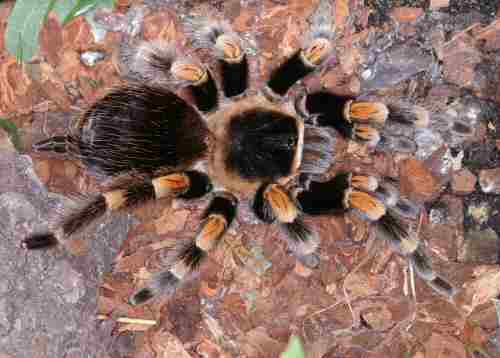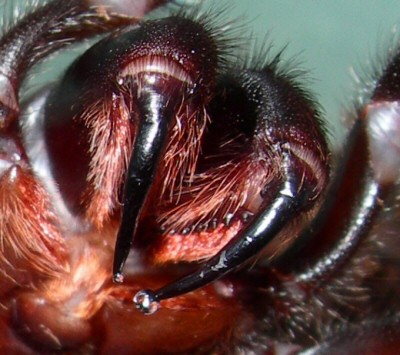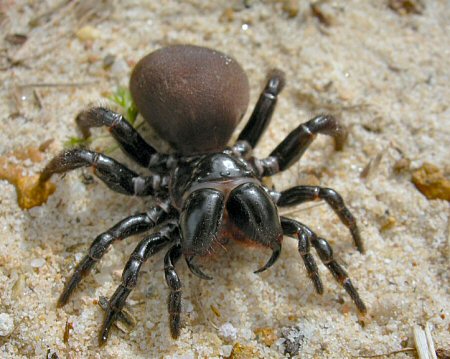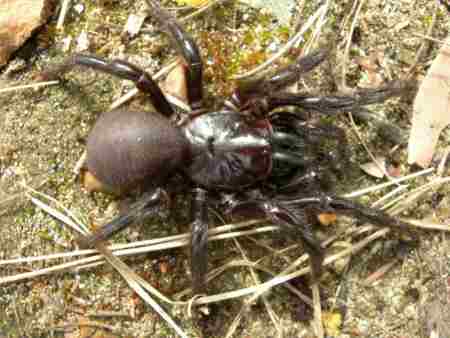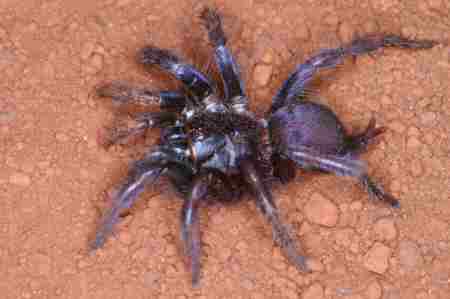Mygalomorphae or primitive spiders
|
These spiders, from the sub-order Orthognatha (Mygalomorphae) or primitive spiders, are famous for their falsely suggested "deadly" bites. More about the exaggerated poisonous of these and other spiders can be read here.
|
Most
of these spiders live fearful lives buried deep in holes. Many species react
on unexpected events by cowering in fear, unable to move, or by violently
plunging their pickaxe fangs. (more
about the fangs) The two long spinnerets at the back end of their abdomen and their large fangs that move up and down instead of side ways, like the modern spiders, are characteristic for this order.
|
|
Brachypelma smitty (Mexican red knee spider) |
|
Family Actinopodidae
Genus Missulena, Mouse spider
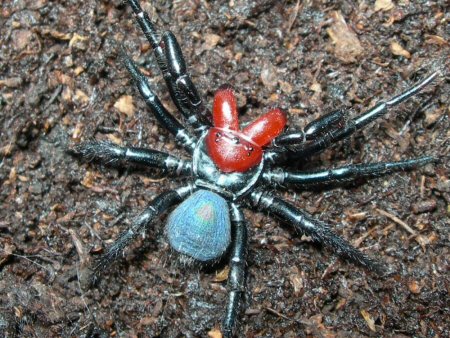 |
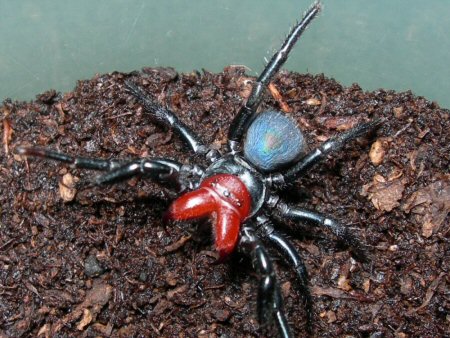 |
| Missulena occatoria, male red-headed mouse spider Picture by Colin Halliday | |
|
|
Habitat Distribution
|
|
|
|
|
Missulena occatoria, female red-headed mouse spider Picture by Colin Halliday |
|
Family Hexathelidae
Genus Atrax, Sydney funnel web spider
|
|
Habitat
|
|
Atrax robustus Pictures by Colin Halliday |
|
|
The Australian Funnel-web spiders (family Hexathelidae,
Simon, 1892) are probably the most dangerous spiders we can encounter. |
Genus Hadronyche
 |
|
| Hadronyche versuta Picture by Colin Halliday |
Genus Bymainiella
 |
 |
| Bymainiella lugubris? | Bymainiella lugubris? |
 |
Genus name derived from the famous Australian arachnologist Barbara York Main |
| Bymainiella sp? | Pictures by Colin Halliday |
Family Iodiopidae
Trapdoor spider
Genus Misgolas
|
|
Misgolas rapax is found around Sydney. Despite their name most Misgolas species, except Misgolas gracilis, do not make a door at the end of their burrow Misgolas spiders are 15 - 30 mm in length and commonly found in
eastern Australia. More here from the Australian Museum: |
|
Misgolas rapax Sydney Brown trapdoor spider Picture by Colin Halliday |
|
|
|
|
|
Unknown Mygalomorph with a length of 15 mm that lived in a dense web on the ground between shrub in Leinster, Western Australia. |
|
|
|
|
Ed Nieuwenhuys, 1 november 2006,
22 september 2006, 5 September 2006
